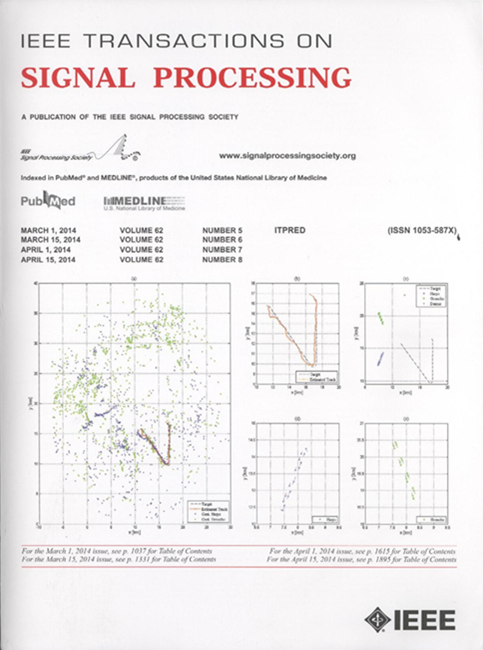Harnessing Common Sparsity for Enhancing AMP-Based Activity Detection and Channel Estimation
IF 5.8
2区 工程技术
Q1 ENGINEERING, ELECTRICAL & ELECTRONIC
引用次数: 0
Abstract
Joint activity detection and channel estimation present significant challenges in massive machine-type communication under grant-free random access. Due to the intermittency of grant-free random access, these tasks can be framed as a compressive sensing problem, where approximate message passing (AMP) has been a popular algorithm to recover the sparse channels. However, existing AMP-based algorithms typically estimate the channels at each antenna independently, largely ignoring the common sparsity support among channels at different antennas and access points. This oversight leads to inadequate performance of AMP-based activity detection and channel estimation, especially under short pilot sequence lengths. To leverage the common sparsity patterns of multiple unknown channel vectors, this paper proposes a Bayesian model that induces block sparsity through a consistent activity status across all channels associated with each device. By treating the activity probability of each device as an unknown parameter, this paper derives an AMP-based expectation-maximization (EM) algorithm to jointly learn the activity probability and the channels. It is shown theoretically that under mild conditions, when the number of antennas goes to infinity, the recovered active status is guaranteed to be the ground truth. Furthermore, to overcome the limitation of the standard AMP, whose convergence to the state evolution relies on large pilot sequence lengths, another algorithm based on the vector AMP, with its convergence depending on the number of devices rather than pilot sequence length, is also proposed. Simulation results demonstrate that the proposed algorithms require a much shorter pilot length than existing state-of-the-art AMP-based methods to achieve the same performance. Notably, under the same pilot length, the vector AMP-based EM algorithm achieves even higher detection accuracy than the covariance-based method in cell-free systems.利用公共稀疏性增强基于amp的活动检测和信道估计
在无授权随机接入条件下,联合活动检测和信道估计对大规模机器通信提出了重大挑战。由于无授权随机访问的间歇性,这些任务可以被描述为压缩感知问题,其中近似消息传递(AMP)已成为恢复稀疏信道的流行算法。然而,现有的基于amp的算法通常独立地估计每个天线上的信道,很大程度上忽略了不同天线和接入点上的信道之间的共同稀疏性支持。这种疏忽导致基于amp的活动检测和信道估计性能不足,特别是在短导频序列长度下。为了利用多个未知通道向量的常见稀疏模式,本文提出了一个贝叶斯模型,该模型通过与每个设备相关的所有通道的一致活动状态来诱导块稀疏。将各设备的活动概率作为一个未知参数,推导出一种基于amp的期望最大化(EM)算法,对活动概率和信道进行联合学习。从理论上证明,在温和条件下,当天线数量趋于无穷大时,恢复的有源状态保证为地真值。此外,为了克服标准AMP对状态演化的收敛依赖于较大导频序列长度的局限性,提出了一种基于矢量AMP的算法,其收敛依赖于器件数量而不是导频序列长度。仿真结果表明,与现有的基于amp的方法相比,所提出的算法需要更短的导频长度才能达到相同的性能。值得注意的是,在相同导频长度下,基于矢量amp的EM算法在无细胞系统中比基于协方差的方法具有更高的检测精度。
本文章由计算机程序翻译,如有差异,请以英文原文为准。
求助全文
约1分钟内获得全文
求助全文
来源期刊

IEEE Transactions on Signal Processing
工程技术-工程:电子与电气
CiteScore
11.20
自引率
9.30%
发文量
310
审稿时长
3.0 months
期刊介绍:
The IEEE Transactions on Signal Processing covers novel theory, algorithms, performance analyses and applications of techniques for the processing, understanding, learning, retrieval, mining, and extraction of information from signals. The term “signal” includes, among others, audio, video, speech, image, communication, geophysical, sonar, radar, medical and musical signals. Examples of topics of interest include, but are not limited to, information processing and the theory and application of filtering, coding, transmitting, estimating, detecting, analyzing, recognizing, synthesizing, recording, and reproducing signals.
 求助内容:
求助内容: 应助结果提醒方式:
应助结果提醒方式:


